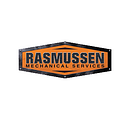Top Five Furnace Maintenance Tips!
What Is A Furnace?
Before using our furnace maintenance tips, an understanding of the system must be achieved. A furnace is a unit that helps circulate hot air throughout a space in order to keep it warm. Furnaces differ from boilers in this way, using heat circulation instead of water. A furnace uses two types of starters to produce heat. Combustion for gas furnaces and electric resistance for electric furnaces. After the furnace produces heat, the facility’s HVAC system disperses it through various vents and ducts and heats the building.
Main Types Of Furnaces
Propane Furnace
This type of furnace uses propane as a fuel. Once ignited, heat exchange occurs and hot air disperses into the vents of the house.
Gas Furnace
A gas furnace is far and away the most popular type of furnace. Gas furnaces use natural gas for combustion to generate heat. Natural gas moves through to the unit through an external gas line. The widespread use of gas furnaces is due to the high amount of heat that they put out. Homes located in cold regions generally use gas furnaces exclusively because of this. Gas furnaces are also extremely cost-effective.
Electric Furnace
An electric furnace is conceptually different than the other types of furnaces. They use electric coils, called elements, to create heat. A resistor connects electricity from the home or facility into this furnace and heats the incoming air. Electric furnaces provide users with high levels of flexibility in heating.
Top 5 Furnace Maintenance Tips
#1: Filtration Efficiency
Filters play a large role in the process of heat distribution in a furnace. It helps by filtering out any unwanted particles in the heated air. Dust, spores, pollen, mites, can all lead to discomfort if filters are not working properly. Furnaces position their filters in the return ducts of the furnace and they are fairly easy to replace. Start by disconnecting your furnace from the power source and locating the blower compartment. Once open, remove the old filter and insert the new filter. Make sure to place it right-side-up to ensure top performance.
#2: Heating Load Management
Furnaces handle immense amounts of heat and energy, so managing their work load is crucial. Electric and gas bills can show an early warning sign of furnace overload. When poor insulation is present in a home or facility, heat exits the structure with no trace. This lowers energy efficiency and requires your furnace to work double time. Overloading your furnace unit on a regular basis can result in a shortened life span and costly repairs. One way to solve this problem is by doing hand tests. Hands-on tests require facility managers to feel the heat and humidity in the walls and corners of their buildings. Being warm and dry is a good sign, while being cold and damp is bad. If the ladder is observed, work may need to be done on the insulation.
#3: Flame Sensor Accuracy
A flame sensor is a safety control on a gas furnace that helps avoid disaster. During ignition, the flame sensor gives off a stream of electricity for the control board to interact with. If the control board doesn’t feel it to be sufficient, then the fuel stream will become automatically blocked. This is done to avoid any type of catastrophic explosion. Over the life span of the furnace, carbon buildup may occur, which causes the system to malfunction. Steel wool can be used to help clean out the flame sensor. While this can be done in-house, having a professional come in may be the safest option. This type of maintenance should be done once a year.
#4: Exhaust Flue Blockage
ENTEK explains the goal of an exhaust flue very well.
#5: Blower Motor Functionality
The blower motor is responsible for air movement within a unit. Along with holding the air filter, the blower judges the temperature of the air before deciding to distribute it to the entire facility. Turning a blind eye to the blower motor may lead to further problems with your heating system. Grinding can occur between the blower motor and the blower wheel, signaled by a shrill screech. Due to the complexity of the blower, a technician should be contacted in order to inspect and diagnose any issues.
Still Having Trouble?
Are these furnace maintenance tips not solving your current problem? Contact Rasmussen Mechanical for an inspection!
